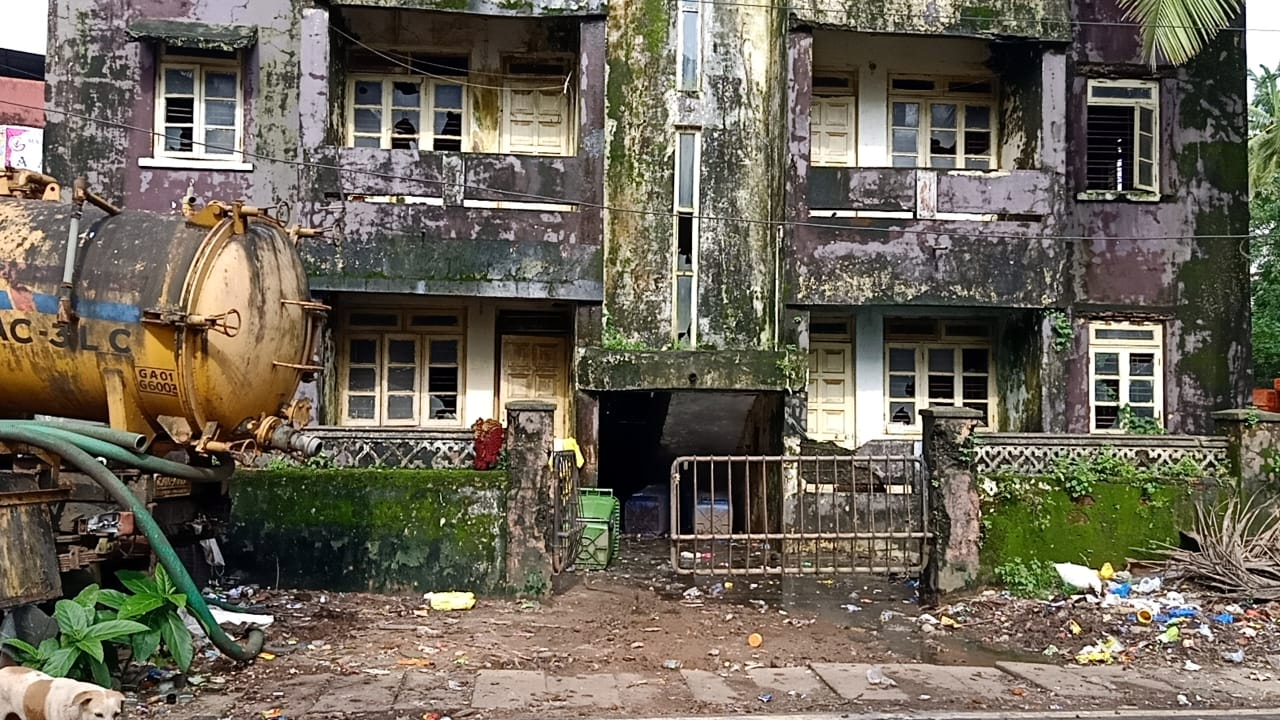
VASCO
As monsoon clouds gather over Goa, a silent yet pressing danger looms over the bustling city of Vasco — around 30 unsafe and dilapidated buildings scattered across its landscape.
These ageing structures, some abandoned and others still in active use, now threaten not only their occupants but also unsuspecting pedestrians and visitors who pass beneath them daily. Fears are mounting that the deteriorating state of these buildings could lead to serious accidents, or worse, fatalities.
Concrete pieces have reportedly fallen from several buildings in the past, occasionally missing pedestrians by mere inches. In one particularly alarming case, chunks of cement fell just outside the Vasco police station — a high-traffic area also close to several key government offices.
Sources in the Mormugao Municipal Council (MMC) confirm that close to 32 buildings have been identified as structurally unsound — some privately owned and others under the municipal council.
Despite multiple inspection visits and issuance of notices over the years, the status quo has remained largely unchanged.
"The MMC does inspect the buildings and issues warnings. But there is little follow-through. Either the owners ignore the notices, or the occupants are unwilling to vacate. The buildings continue to deteriorate, especially during monsoon, posing danger to all," said an MMC official on condition of anonymity.
Shops below, cracks above
What makes the situation even more dangerous is that some of these buildings house functioning shops on their ground floors, drawing crowds throughout the day.
Others are entirely unoccupied but have begun showing signs of severe structural damage — cracks in walls, leaning columns, and exposed steel reinforcements. Many of the buildings are over 45 years old, beyond their structural lifespan, yet still stand due to bureaucratic delays and disputes between landlords and tenants.
While debates on demolition have continued for years within the municipal council, action on the ground has been slow.
Vasco MLA Krishna Salkar, who has raised the issue multiple times in the Assembly, has pushed for stricter enforcement.
“There is a need for immediate action — either demolish these buildings or seal them completely to prevent any mishaps,” he said.
However, only one building, located on Swatantra Path, was actually demolished in May 2023 after repeated complaints. It had become a serious hazard, with concrete frequently falling onto the footpath.
The MLA has also lobbied for redevelopment plans and has held discussions with urban development authorities to redevelop MMC buildings under a public-private partnership (PPP) model.
While proposals are in place and projects like the fish market and sports complex are underway, the question remains whether unsafe residential and commercial buildings will get the urgent attention they need.
Adding to the complexity, some housing societies in a crumbling state remain unoccupied but legally tied to multiple owners, making consensus for redevelopment difficult.
The government has tried to address this by offering incentives, such as increased Floor Area Ratio (FAR) under the new Special Planning Regulations (SPR), to encourage redevelopment. Yet, the take-up has been slow due to mistrust, legal hurdles, and a lack of coordination between stakeholders.
In the end, the danger from these ageing structures remains very real — a threat worsened by heavy rains, water seepage, and weakened foundations. Residents and shopkeepers working under cracked roofs continue their daily lives with a sense of helplessness, knowing the risks but unsure of alternatives.
If urgent and concrete steps are not taken soon, Vasco could be staring at a preventable tragedy. The falling concrete and crumbling facades are not just symbols of administrative delay — they are daily warnings from a city’s neglected past that threaten its present.